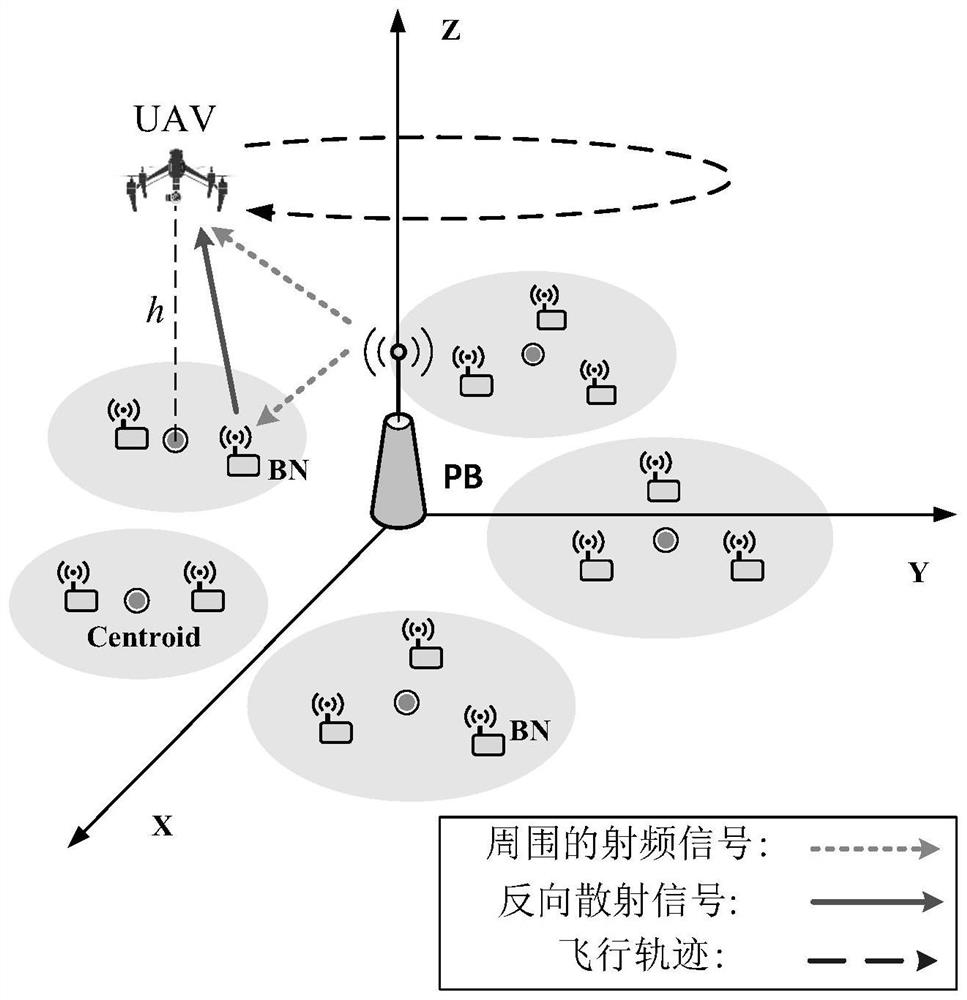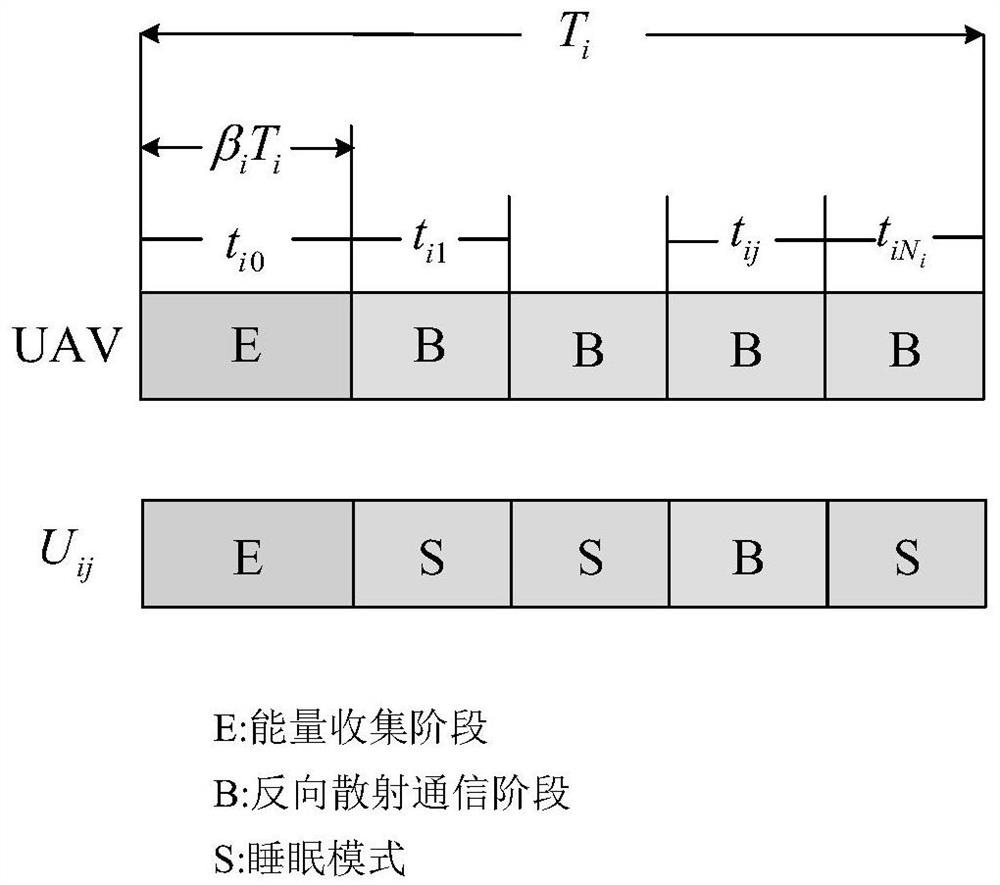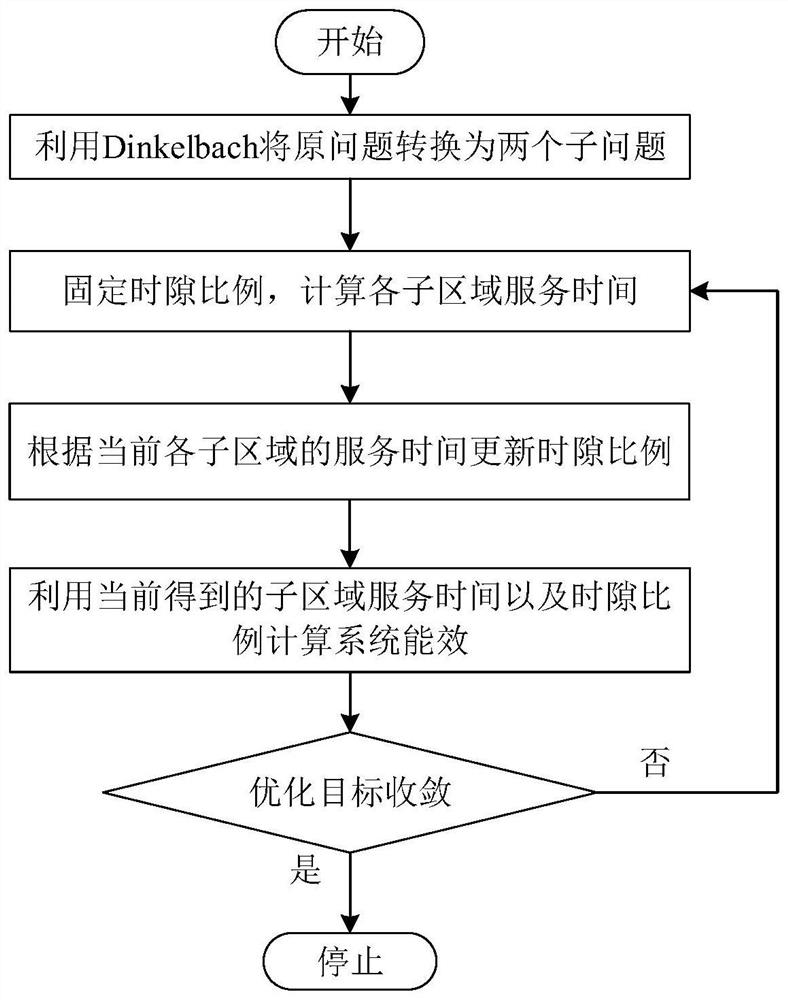Trajectory optimization and resource allocation method for single unmanned aerial vehicle backscatter communication network
A technology of backscattering and communication network, applied in the direction of wireless communication, sustainable communication technology, radio transmission system, etc., can solve the problem of not considering the energy consumption of drones, achieve good link status and communication quality, and improve the system Energy efficiency, the effect of reducing energy consumption
- Summary
- Abstract
- Description
- Claims
- Application Information
AI Technical Summary
Problems solved by technology
Method used
Image
Examples
Embodiment Construction
[0032] The present invention will be further described in detail with reference to the accompanying drawings and embodiments.
[0033] The present invention proposes a single UAV backscatter communication network trajectory optimization and resource allocation method oriented to energy efficiency optimization, which jointly considers UAV trajectory and time resource allocation. scatter communication network.figure 1 In the scenario shown, a UAV with a rotor wing collects data from M (M ≥ 1) ground backscatter nodes BN, and the BN nodes transmit data by reflecting RF radio frequency signals emitted by PB (Power Beacon, signal tower); Backscatter nodes are uniformly and independently distributed around the PB; drones and reflection nodes BN can harvest energy from the PB. The height of PB is H, and there is a stable energy source. As the wireless energy source of the system, the transmission power of PB is P B express.
[0034] Establish a three-dimensional Cartesian coordinat...
PUM
 Login to View More
Login to View More Abstract
Description
Claims
Application Information
 Login to View More
Login to View More - R&D
- Intellectual Property
- Life Sciences
- Materials
- Tech Scout
- Unparalleled Data Quality
- Higher Quality Content
- 60% Fewer Hallucinations
Browse by: Latest US Patents, China's latest patents, Technical Efficacy Thesaurus, Application Domain, Technology Topic, Popular Technical Reports.
© 2025 PatSnap. All rights reserved.Legal|Privacy policy|Modern Slavery Act Transparency Statement|Sitemap|About US| Contact US: help@patsnap.com



